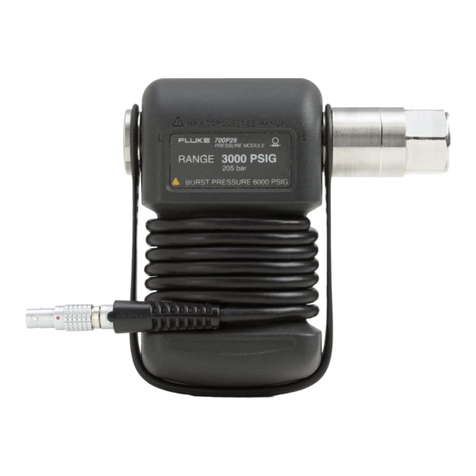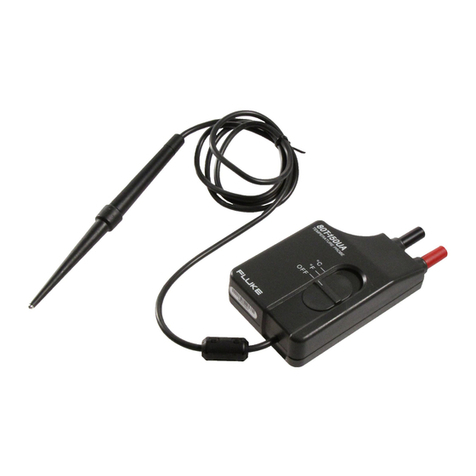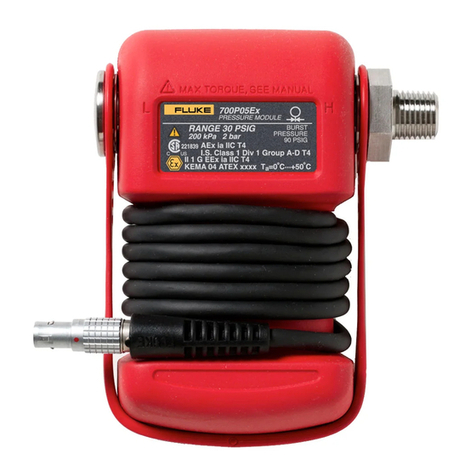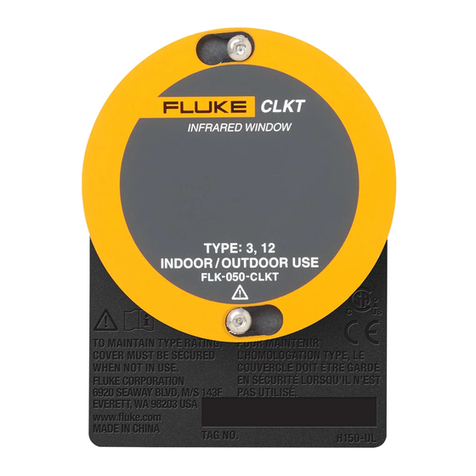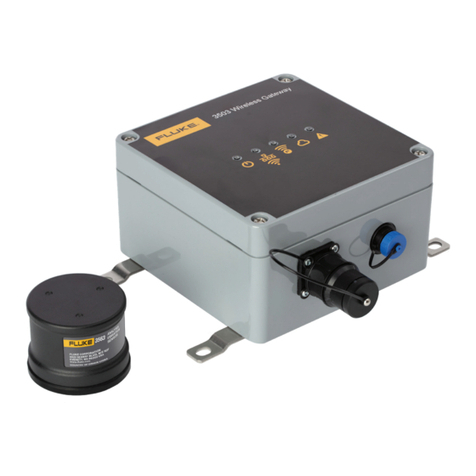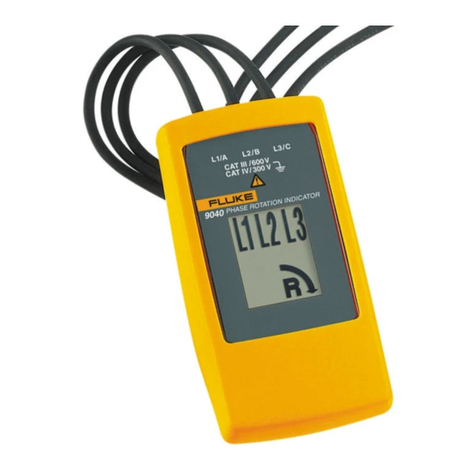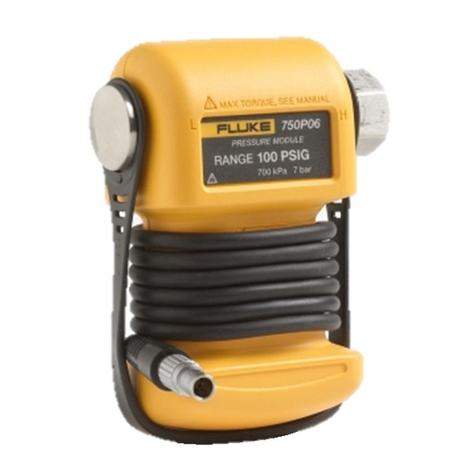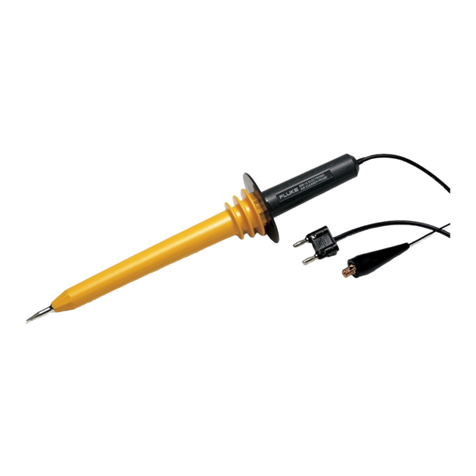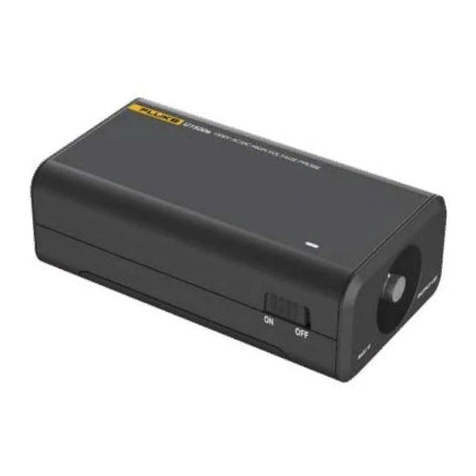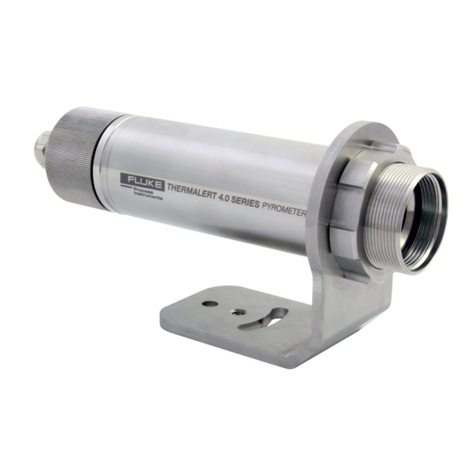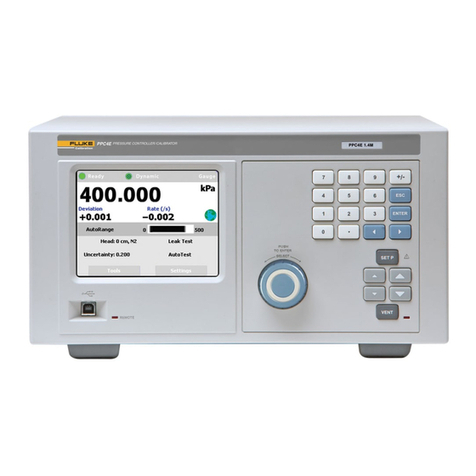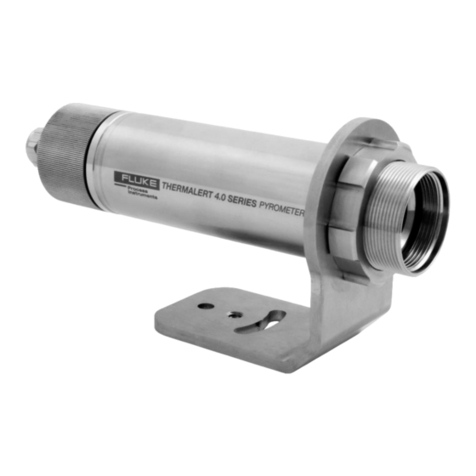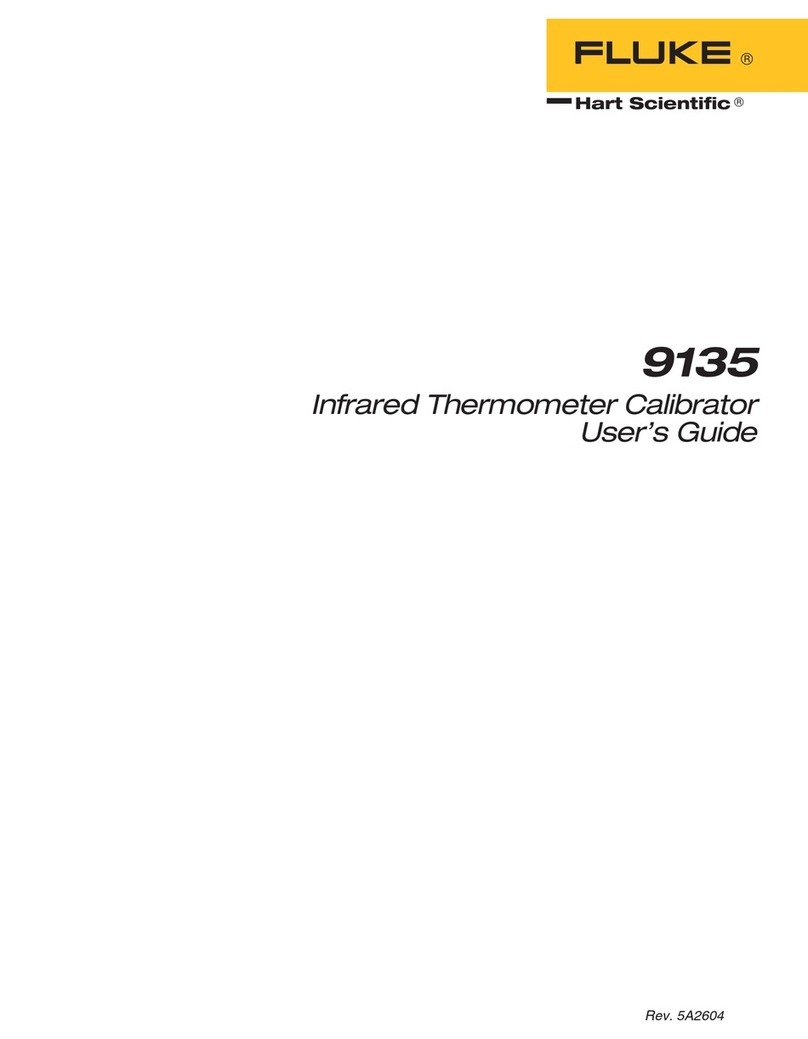
If the Probe does not perform properly, use these steps to help isolate the
problem:
1. Test the battery. Be sure that the green ON-indicator lights when you
select the 10 mV/A range or the 100 mV/A range.
2. Inspect the jaw mating surface for cleanliness. If any foreign material is
present, the jaws will not close properly and errors will result.
3. Verify that the Probe is zeroed properly. For zeroing be sure that the
ScopeMeter test tool or oscilloscope is DC-coupled.
4. Verify that the function selection on the ScopeMeter test tool or
oscilloscope is correct, for example, the display vertical resolution is not
too low or too high.
Repairs or service not covered in this document must be performed only at a
Fluke Service Center. A Probe under warranty will be repaired or replaced (at
Fluke's discretion) and returned at no charge.
Cleaning and Storage
Periodically wipe the case with a damp cloth and detergent. Do not use
abrasives or solvents. Open the jaws and wipe the magnetic pole pieces with
a lightly oiled cloth. Do not allow rust or corrosion to form on the magnetic core
ends.
If the Probe is not used for long time periods (>60 days) the battery should be
removed and stored separately.
Accessories
An adapter accessory is required to use the Probe with a digital
multimeter. The BNC-to-Banana Adapter, Fluke Part PM9081/001, is
available to order.
Specifications
Maximum Voltage between any
Terminal and Earth Ground.............. 600 V
Dimensions....................................... 67 mm x 231 mm x 36 mm
(2.6 in x 9.1 in x 1.4 in)
Weight .............................................. 330 g (11.6 oz), battery included
Output Cable .................................... 1.6 m (63 in)
Maximum Conductor Size ................ 11.8 mm (0.46 in)
Maximum Jaw Opening.................... 12.5 mm (0.49 in)
Temperature
Operating.................................. 0 °C to 50 °C (32 °F to 122 °F)
Storage..................................... -30 °C to +70 °C (-22 °F to +158 °F)
Relative Humidity (Operating)
0 % to 85 %.............................. 0 °C to 35 °C (32 °F to 95 °F)
0 % to 45 %.............................. 35 °C to 50 °C (95 °F to 122 °F)
Altitude
Operating.................................. <2000 m (<6560 ft)
Storage..................................... <12 000 m (<40 000 ft)
Demagnetize Probe.......................... Open and close Probe jaws several
times
80i-110s.book Page 7 Monday, December 5, 2016 12:12 PM
